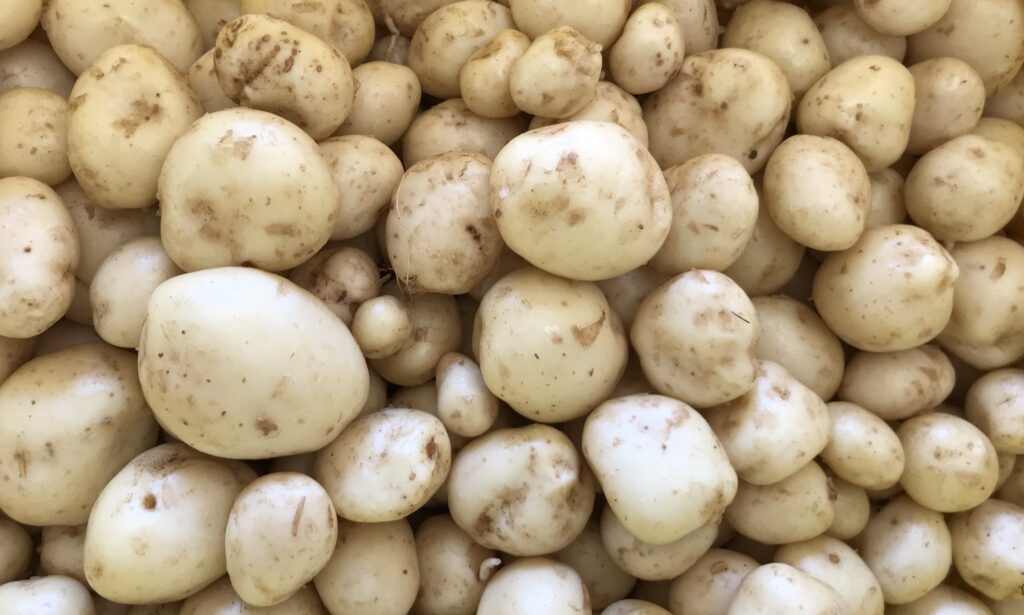
It’s new potato time! We’ve just started harvesting our spring 2023 potato crop, and if you aren’t excited yet, hopefully you will be by the time your finish this week’s News from the Farm.
Potatoes often don’t get the love and attention they deserve. This is unfortunate given their long history, impressive diversity (there are over 4,000 known varieties, with about 100 that are commercially available), delicious taste, and impressive nutritional profile. Potatoes are an excellent source of vitamin C, vitamin B6, potassium, and fiber, thus often on lists of “what food would sustain you the longest if you had to live on one thing”.
We plant two potato crops, a spring and a fall crop. Our spring crop is planted in two waves: the first by mid-February and then another planting three to four weeks later, so that they aren’t all ready at once. This year, due to the rain, our second planting was two months later, the latest we’ve ever planted. The first planting was very slow to germinate and just sat in the cold, wet ground for about two months (and fortunately didn’t rot) and the second planting germinated really quickly. We plant a fall crop in late August and usually start to harvest in mid-to-late November, hopefully in time for Thanksgiving, and these potatoes are a staple of our winter boxes, breaking up the flood of winter squash.
The planting process is the same for both times of year; we use a potato planter to make a furrow, drop two seed potatoes per bed, and then cover them with dirt. Two things that’re special about growing potatoes: they require wider spacing (72-inch beds instead of 60-inch), so we have to adjust any equipment used for potatoes, and we hill our potatoes, meaning mounding more soil around growing potato plants. Potatoes form along the underground stem of the plant, so when we hill our potatoes, we’re encouraging stem growth and creating more sites for potatoes to form, thus increasing yield. Hilling also prevents green potatoes by keeping growing potatoes out of the light. Depending on the weather, we’ll hill 3-5 times, adding a few more inches of soil each time, and also providing weed control.
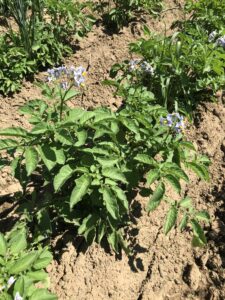
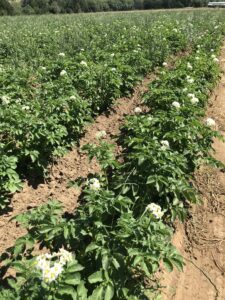
Potatoes are mature when the leaves have started to yellow and die, but “new potatoes” can be harvested before they have reached maturity, usually when the plants are fully in flower. You’ll often see small “baby potatoes” in stores; the designation of new potatoes isn’t based on size, it’s based on age. A new potato hasn’t converted all its simple sugars into starch and they are extra creamy and sweet. They have thin, delicate skins, meaning they might be a little scuffed up looking, they don’t need to be peeled, and they definitely should be treated like other perishable produce – they MUST be kept refrigerated (ideally in plastic bag that will keep them moist) and for optimal taste, should be eaten within a week.
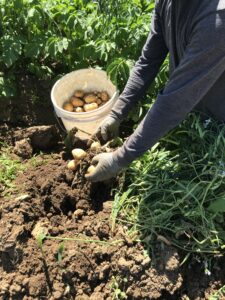
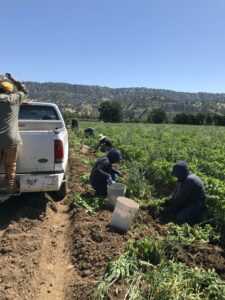
New potatoes are so delicate that they must be harvested by hand, and they are picked the day they are packed. Harvesters fill up five gallon buckets, when those get back to the shop, we fill up the buckets with water, then after a brief soaking, they go through the washer. We pick out any bad ones, and then they’re ready to go. Mature potatoes have set thicker skins, so they aren’t as delicate so we can harvest them with a potato harvester, and they can be stored. We store them unwashed in macro-bins in a cooler until we’re ready to use them, at which point we’ll run them through the washer. Contrary to a lot of the storage suggestions out there, we recommend storing our mature potatoes in the refrigerator too, and always kept out of the light (like in a paper bag).
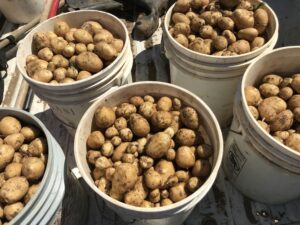
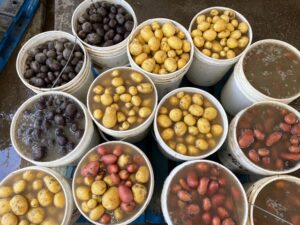
Below is a sampling of some of the varieties we grow. Each of our specialty varieties has a distinct flavor and texture all its own that made us choose to grow it.
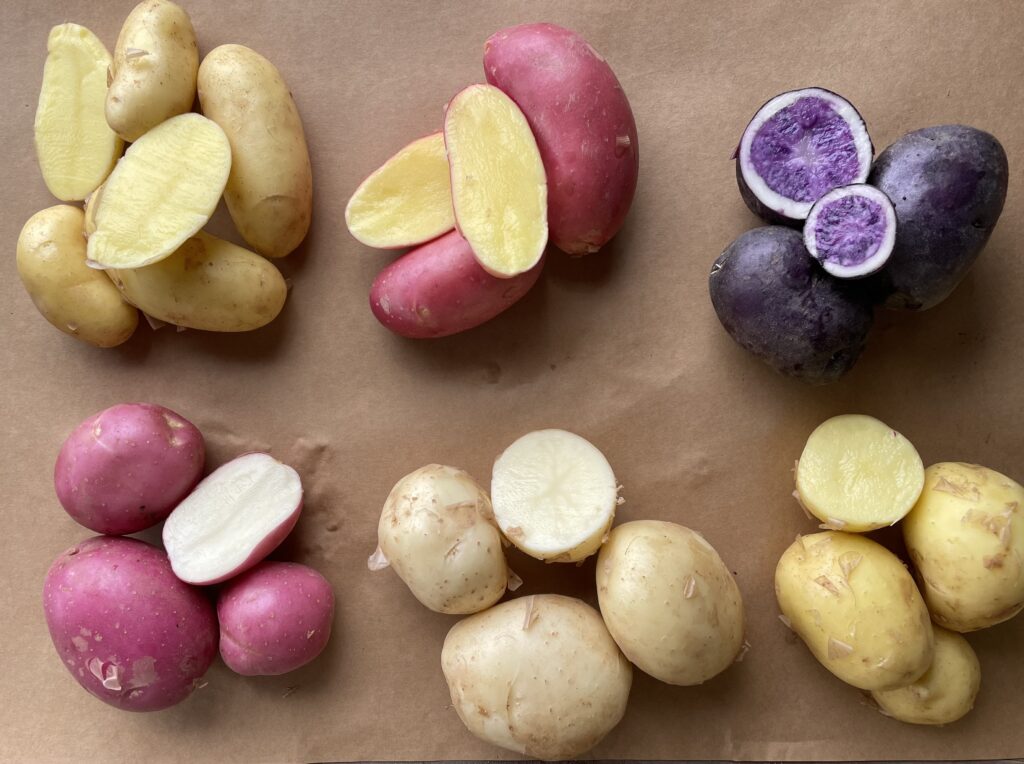
By harvesting new potatoes, we’re “robbing the cradle” and reducing the amount of full-sized, mature potatoes we’ll get. And, since they have to be harvested by hand, it’s a labor-intensive process. But they’re so delicious that we think it’s worth it. This years seed crop was great seed and the report from the field is that it looks like we’ve got a great spring potato crop. Are you excited yet?
- Elaine Swiedler, CSA Manager
